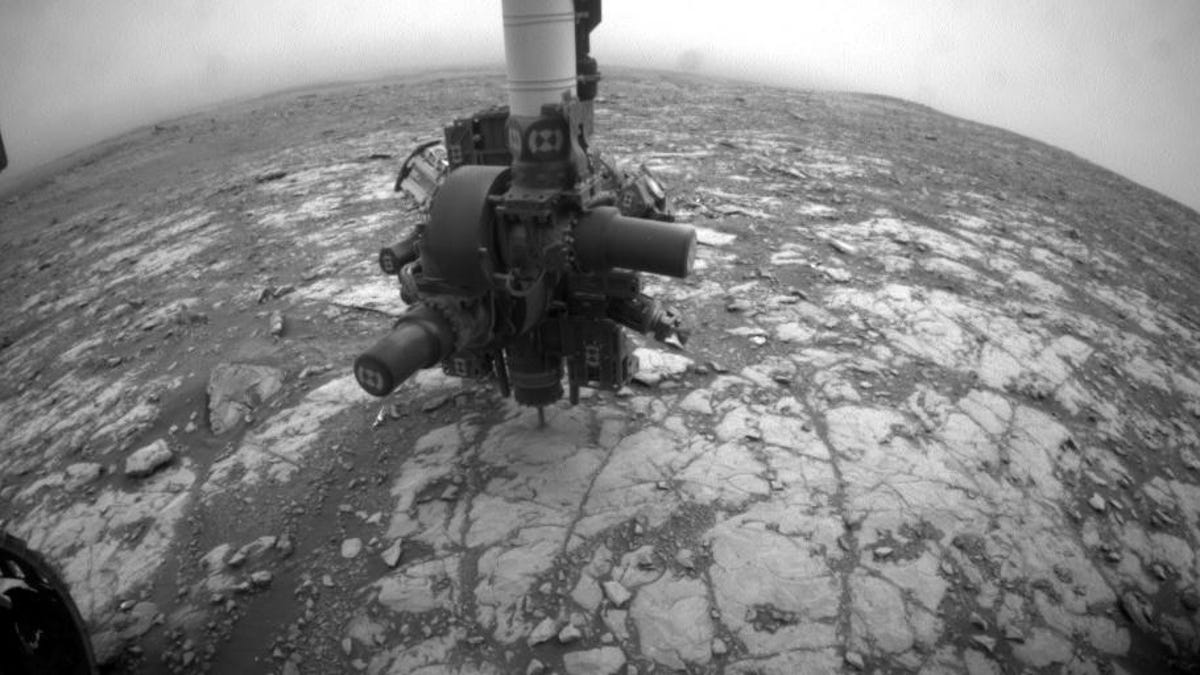NASA Mars rover found a rock too hard to drill into
It's a hard-rock life for the Curiosity rover on Mars.

The Curiosity rover's drill didn't get very far on this rock.
When NASA's Curiosity rover overcame a motor glitch to once again drill into rocks on Mars earlier this year, it was a triumph of ingenuity and engineering. Drilling operations hit a small snag this week when the rover met a particularly unforgiving rock.
You can see the slight indentation where Curiosity attempted to drill.
Curiosity touched its drill down on a target named "Voyageurs," an interesting-looking rock in the Gale Crater. The drill worked as expected, but it just couldn't get deep enough into the rock to generate a sufficient amount of material for the rover to collect a sample for analysis.
"All evidence suggests that this rock target is one of the hardest yet observed in Gale crater," Curiosity team member Mark Salvatore wrote in a mission update from Tuesday.
The geology of the rock raises a lot of questions about Curiosity's current location on the Vera Rubin Ridge. He wonders if the rock's hardness could be due to changes in water chemistry as these particular sedimentary rocks were deposited.
Curiosity successfully drilled into a rock named "Duluth" back in May. There were no hitches that time. The drill generated enough material for sampling.
The rover has moved on since Duluth and may now be exploring an area full of harder rocks. The science team will need to investigate further to see if Voyageurs is an outlier or an example of the current landscape.
Salvatore describes the drilling impediment as "disappointing," but says he's lucky to work with scientists and engineers "who can collectively turn a frustrating sigh into a gasp of excitement as we think about our next observations and what more we have to learn about this interesting and foreign environment."

